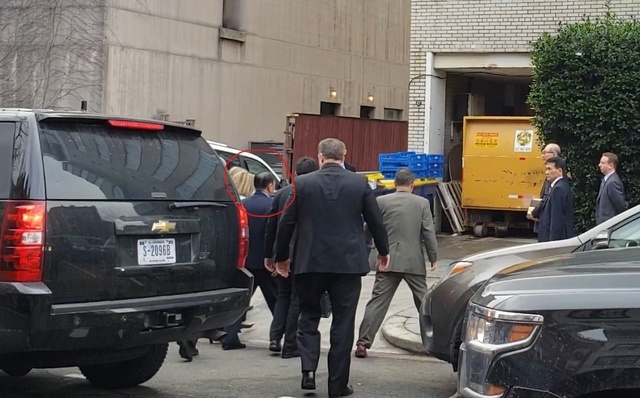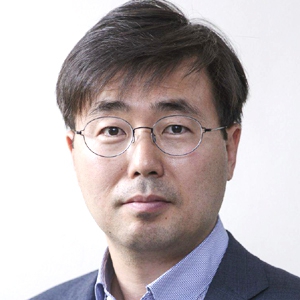 |
|
Workers’ Party of Korea (WPK) Vice Chairman Kim Yong-chol (circled) heads to the Dupont Circle Hotel in Washington, DC, after his meeting with US President Donald Trump on Jan. 18. (Hwang Joon-bum)
|
Kim Yong-chol’s visit confirmed that Trump won’t abandon dialogue with N. Korea
When North Korean Kim Yong-chol, vice chairman of the Workers’ Party of Korea, was flying to Washington, DC, on Jan. 17, I visited six hotels in the area in an attempt to figure out where he would be staying. I’m ashamed to say that my efforts were in vain. Reporters from South Korea, the US and Japan joined the hunt. The veil of secrecy around Kim’s accommodations wasn’t lifted until his plane was about to touch down. Kim’s entrance to the hotel was the point where I felt the security measures were particularly intense. Kim appeared through the loading entrance at the back of the hotel. It was a sorry sight, leading some reporters to wish that the staff had at least removed the garbage cans. There wasn’t a trace of the smile that Kim had flashed to reporters when he visited the US in June 2018. This suggested that Kim had dispensed with the performative aspect this time around and was focused on deliberating substantive matters with the US as a messenger from North Korean leader Kim Jong-un. In the photos made public by the White House, Kim Yong-chol appears to be in a very serious conversation with Trump, accompanied by Kim Hyok-chol, Pak Chol and Kim Song-hye. The Americans took Kim Yong-chol’s visit very seriously. US President Donald Trump hasn’t done much work during the partial shutdown of the US government, but he did release a report reviewing missile defense that describes North Korea as a “very special threat” and took time to meet Kim. Immediately afterward, the White House placed the North Korea-US summit in June 2018 at the top of the foreign policy category in a list of Trump’s accomplishments during his first two years as president. These impressions clarify a few things. One is that Trump won’t abandon dialogue with North Korea, since he wants denuclearization and peace on the Korean Peninsula to be his greatest achievement, and another is that he will push ahead with holding the second North Korea-US summit at the end of February, whatever that requires. Furthermore, both Trump and Kim Jong-un appear to be focused on reaching a more tangible agreement than they did during their first summit. Considering that Trump released the Missile Defense Review, postponed from last year, at such a time and that US Secretary of State Mike Pompeo said that the US “wants to reduce North Korea’s nuclear weapon and missile capabilities,” it appears possible that the suspension of North Korea’s ICBM production or the dismantlement of ICBMs will be on the agenda of the North Korea-US talks. Some predict that the US will regard a “nuclear freeze” in which North Korea suspends production of ICBMs, nuclear fuel and nuclear warheads as the starting point for step-by-step denuclearization. But there are still concerns both inside and outside the US government that Trump will declare victory after reaching a nonbinding agreement. As Trump has complained, the press has given short shrift to the “incredible improvement” represented by no North Korean nuclear weapon or missile tests for one year and two months, since Nov. 2017. While it would be great for North Korea to disclose and dismantle all its nuclear weapons, materials and facilities at once and for the US to immediately lift sanctions and establish diplomatic relations with the North, many people have realized that this is practically impossible. Even if a roadmap for denuclearization is released, it will have to take place in steps, with each side trading “action for action.” The only alternative is to put up with tension and conflict whose outcome is uncertain.
 |
|
Hwang Joon-bum, Washington correspondent
|







